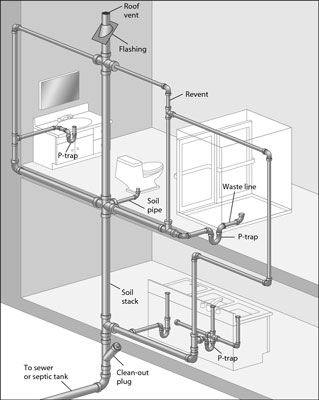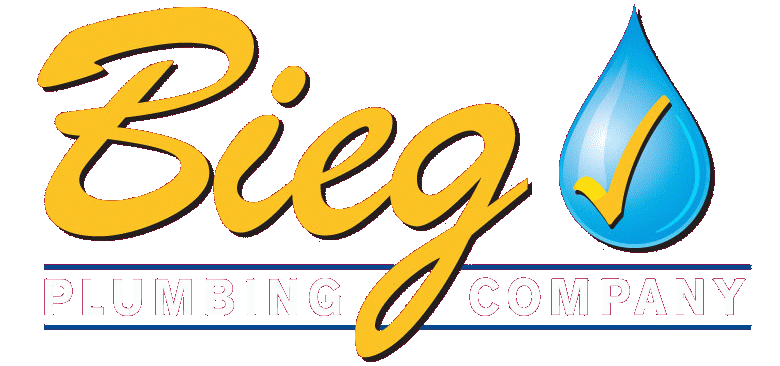Waste Stack
Are you experiencing a clogged plumbing stack?
A waste stack is a vital component in your home’s plumbing system. Also known as a drain-waste-vent (DWV) system, the waste stack is a large-diameter pipe that receives water from toilets and other drains and runs all the way through the house vertically. It connects to the sewer line under the property to dispose of the wastewater and is vented at the roof to let noxious sewer gas out. If your waste stack is not draining and venting properly, your home could be exposed to dangerous waste materials and gas. In a typical home, there will be two waste stack systems, while multi-unit properties could have several.

Problems and warning signs
Here are some ways to tell if your waste stack is not performing properly, and what to do to address the problem:
- Foul odors or gurgling sounds. The roof vent leading outside could be blocked or damaged and waste stack vents could be malfunctioning. This can be quite dangerous, so have it looked at as soon as possible. Solutions can range from purchasing a vent cover to keep pesky birds from nesting inside to replacing the venting section if it has been severely damaged. These problems are often found in newly finished basements. If your basement plumbing fixtures aren’t correctly connected to your stack, water can siphon from the pipes and lead to noxious sewer gas buildup.
- Clogs. Waste buildup and blockages can occur in the DWV, requiring immediate attention. If your sinks and tubs are backed up, you could have a major clog on your hands. If you’re handy around the house, you can inspect for clogs at the drain pipe through the use of its clean-out plug. This plug is usually Y- or T-shaped and allows for easy pipe access. If you can’t locate the clog this way, it could be a major blockage deeper within the pipe system. An inspection using a small camera may be necessary. We recommend calling a professional if this is the case. They can use techniques such as commercial snakes and hydro-jetting to remove the clog.
- Cracks or ruptures. In extreme cases, your waste stack could be cracked or even ruptured. If there’s a noxious odor in the home along with visible water damage near the waste stack, this could be the issue. Turn off water to the home immediately and call a plumbing professional. Your home’s DWV will need to be replaced. If you own an older home, a replacement might be in order due to ordinary wear and tear over time.
Repair or replace
Deciding to replace your waste stack can be a big investment, but sometimes it is unavoidable. Older homes featuring clay or cast-iron waste stacks should be replaced with modern PVC alternatives.
- Repair. If you have a PVC waste stack that isn’t very old, you may be able to patch small cracks.
- Replace. If you have major cracks, holes or an older cast-iron waste stack, you should have it replaced as soon as possible. Cast-iron systems were built to last 50 years but have been shown to wear out in as little as 20 years. Cast iron pipes also cannot handle the PH levels of condensate from newer high-efficiency HVAC systems. Don’t take a chance on a complete rupture.
If you suspect your waste stack is damaged, don’t hesitate to call one of the friendly professionals here at Bieg Plumbing to help. We have the tools and knowledge to unclog, repair or replace your DWV and ensure your home is safe and clean. Contact us today with any questions or concerns.
SEE WHAT OUR CUSTOMERS ARE SAYING ABOUT US
CONTACT US TODAY!






